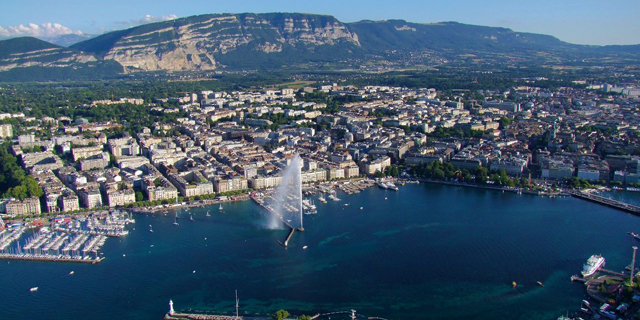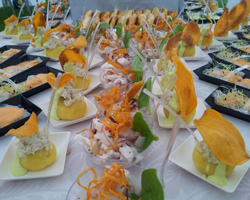When Hubert Escher, a Geneva, Switzerland-based restaurateur and hotelier set off for Lima, Peru, in 1957, his friends and colleagues where aghast.
“They thought I was going on an expedition,” the affable Escher tells me in perfect Spanish on a warm evening over a couple of Pisco Sours. Hard to believe that Escher arrived in Lima without knowing a soul or speaking a word of Spanish, but successfully managed El Cortijo, Lima’s most prestigious restaurant at that time, and several years later, opened the city’s first Peruvian restaurant in Geneva, which he christened El Tambo.
“Alas, it didn’t last long because in Geneva, no one was ready for Peruvian food,” Escher, the one-time co-owner of the prestigious Brasserie Lipp restaurant in downtown Geneva, explains.
Forty years ago Geneva, a city heavily skewed toward classic French fare, wasn’t ready for any kind of ethnic food, let alone Peruvian or Latin cuisine. When I was growing up in 1980s Geneva, you’d have been hard pressed to find a Pisco Sour or a churro.
Flash-forward to today; things are quite different. Many Genevois have traveled far beyond their borders, and immigration into Switzerland from different parts of the world — Latin America included — has increased significantly, enhancing the culinary options that are now available.
Walk around Geneva today and see Turkish kebab houses next to Vietnamese and Thai take-aways, as well as Lebanese diners, and grocery stores selling products (fresh as well as canned/boxed) from Latin American countries. In the farmers’ markets of downtown Geneva and during the annual summer Fetes de Genève, churros and tacos are now as commonplace as ham sandwiches, veal sausages, and crepes au chocolat.
Geneva also features a growing number of establishments serving up authentic Latin staples like papas rellenas, arepas de choclo, and even ceviche. Today, more people are willing to venture just a little bit off the beaten track to try, say, a Peruvian tamal criollo, or forego their morning croissant for novelties like a Bolivian cheese and yam cunape, or even a petit dejeuner Colombien, Colombian-style eggs, coffee, a sweet buñuelo (bun) and, when it’s available, a juice made from the small orange known as lulo.
Next up, Geneva restaurateurs talk about building a following in Switzerland…
[pagebreak]Tina Marchino, a California native, started El Paraiso de Tina, her bodega and restaurant as a hangout for Geneva’s growing Colombian community. “Everyone, from various Colombian Ambassadors down, have hung out here,” she boasts. And though her place is still small, it’s always hopping, with the phone ringing off the hook with reservation requests or orders for arepas or papas rellenas.
Diners love the flavors of Colombian staples like the copious rice and meat bandeja paisa and the chicken-and-potato ajiaco soup.
“They’re filling and full of new and exciting flavors,” one diner tells me.
And, she adds, they’re also affordable. Price is definitely leading people to seek out other dining options, Latin included, since many restaurants in Geneva are prohibitively expensive. Nevertheless, there’s a certain Swiss definition as to what constitutes haute cuisine and thus far, only upscale Peruvian food (like the type pictured at right) has managed to break through the gastronomic divide ethnic food faces within the country.
“The flavors are so unique and so different,” says Lydia Gallwey, a finance professional, of Peruvian food. She was so taken with the cuisine that she served a catered Peruvian feast, replete with Pisco Sours, at her 40th birthday.
Cecilia Zapata, owner of the highly popular Peruvian catering service, Pachacamac, is constantly flooded with orders for ceviches, raw fish tiraditos and the spicy potato salad, papas a la huancaina from a clientele that’s willing to pay high prices. “I try and showcase the diversity of Peruvian cuisine – its herbs, spices and multiple flavors,” she explains.
Seems like the genera population of Geneva is catching on.



![Making Mealtime Matter with La Familia: Easy Sofrito [Video]](https://thelatinkitchen.com/wp-content/uploads/2015/10/sofrito-shutterstock__0-500x383.jpg)
![Easy Latin Smoothies: Goji Berry Smoothie [Video]](https://thelatinkitchen.com/wp-content/uploads/2015/12/goji_berry-shutterstock_-500x383.jpg)
















![Fun and Fast Recipes: Fiesta Cabbage Salad [Video]](https://thelatinkitchen.com/wp-content/uploads/2015/11/fiesta_cabbage_slaw-shutterstock_-500x383.jpg)









